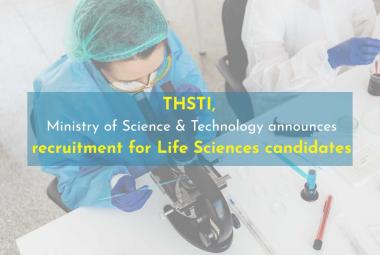 About Authors:
About Authors:
Lohithasu Duppala* , Manikumar Kothakota
GITAM Institute of Pharmacy,
GITAM University, visakhapatnam, Andhra Pradesh, India-530045.
* lohithasu@gmail.com, +919491894432
INTRODUCTION:
Cell Theory:
· All organisms consist of one or more cells.
· Cell is the smallest unit of life.
· All cells come from pre-existing cells.
Cell cycle:
The dividing and non –dividing stages in the life of a cell are described by a series of events called the cell-cycle. The cell cycle is the sequence of events by which a cell duplicates its genome and divides into daughter cells.Some cells, like skin cells ,divide continuously throught the life of the organism.Cardiac muscle cells are arrested in G2 phase.
[adsense:336x280:8701650588]
REFERENCE ID: PHARMATUTOR-ART-1683
The cell cycle has 2 main phases:

1.Inter phase-
It is the resting phase. It is the time during which the cell is preparing for division by undergoing both cell growth and DNA replication . 95%(approximately) of cell cycle spent in this phase. It is divide into:G1,S and G2 phases. The duration of 3 phase varies from species to species, and also cell to cell with in the species. Cells may withdraw from cycle into G0 or re-enter from it. Most of cells in human body are in G0 state. Neurons and skeletal muscle cells are present in terminally differentiated G0 stage , in which cell division never occurs.G1 phase,in which cell synthesizes proteins, lipids and carbohydrates and organells begin to double in number. S phase, in which cell initiates the immense job of replicating the DNA and proteins are manufactured ,including those that are part chromosomes and proteins that co-ordinate the many events taking place in nucleus,cytoplasm.G2 -phase,in which cell synthesizes many proteins .
2.M-phase-
It starts with the nuclear division ,corresponding to karyokinesis and usually ends with cytokinesis.When the cell actively dividing in mitosis.During mitosis,the replicated genetic material divides.Mitosis is division of the eukaryotic nucleus so that the daughter cell nucei acquire the same number and kinds of chromosomes as the parent cell nucei. Mitosis is a continuous process.
Mitosis is divided into four substages:
PRO(before) phase
META(mid) phase
ANA(back) phase
TELO(end) phase
The engines that drive the progression from one step to the other step , a series of protein complex units composed of two sub units:
1. cyclins-
The Kinase invoved in the cell cycle are called cyclin –dependent because they are activated when they combine with protein called a Cyclin. Cyclin is a regulatory component, they undergo a cycle of synthesis and degradation in each division of cell cycle.The major classes of cyclins are G1-cyclins, S-cyclins and M- cyclins. In mammalin cells, at least 16 cyclins have been identified.Cyclins undergo a cycle of synthesis and degradation in each cycle.Cyclins are so named because their quantity is not constant. They increase in amount until they combine with a kinase ,but this is suicidal act because now the kinase activated various enzymes ,one of which destroys the cyclin.
2.cyclin dependent protein kinase( CDK)-
cyclin dependent protein kinases regulate the passage of cells through G1 to S Phase and G2 to M Phase checkpoints. Cyclin dependent protein kinases are enymes that add phosphate groups to target proteins. CDK s activity are regulated by cyclins. They catalyze the phosphorylation of specific serine and threonine residues of specific target proteins. In mammalin cells, at least 9 cdks have been identified.CDKs level is constant during the cell cycle. S-kinase is capable of starting the process of DNA replication after it has combined with S-cyclin. S-cyclin is now destroyed and S-kinase is no longer active.M -kinase is capable of turning on mitosis after it has combined with M-cyclin.It is known that this particular kinase starts the process of chromosome condensation,nuclear envelope breakdown and spindle assembly.Now M-cyclin destroyed.
[adsense:468x15:2204050025]
CYCLIN-CDK COMPLEXES:
The cyclins level change leads to activation of cyclin-cdk complexes.These are inactivated by regulated proteolysis (catalysed by ubiquitin ligases , Skp1 –Cullin-F-box ,S -Stage and G1 –Stage ;Anaphase Promoting Complex-M-Stage) of cyclins at specific cell cyclic stages.At two critical check points a kinase enzyme combines with a cyclin and this moves the cell cycle forward.
NOW YOU CAN ALSO PUBLISH YOUR ARTICLE ONLINE.
SUBMIT YOUR ARTICLE/PROJECT AT articles@pharmatutor.org
Subscribe to Pharmatutor Alerts by Email
FIND OUT MORE ARTICLES AT OUR DATABASE
THE ROLE OF Rb PROTEIN:
Rb PROTEIN:
· It is encoded by the Rb gene ( located on chromosome 13q14.2) is a 110-kDa polypeptide chain ,which can be phosphorylated.
· It is a product of retinoblastoma gene, a tumor suppressor gene.
Rb PROTEIN- regulation of cell division:
· Retinoblastma is a tumor of retina. Retinoblastma arises when both copies of the Rb genes are inactivated. Retinoblastma is a substrate for CDK –cyclin D complexes.
· It acts as break in mammalian G1 cells.E2f (TRANSCRIPTIN factor) ,binding with specific DNA sequence and induces many genes to transcribe.
· Transcription of the cyclin A gene can be activated by high level of E2f (TRANSCRIPTIN factor). The products of these genes are required for S-phase. E2f (TRANSCRIPTIN factor) activity is regulated by Rb Protein.
· When Rb protein binds to E2f (TRANSCRIPTIN factor) its activity is suppressed and transcription of gene involved S-phase stops.
· Phosphorylation of Rb protein ,reduces its affinity for E2f (TRANSCRIPTIN factor) and allows E2f (TRANSCRIPTIN factor) to heterodimerize with factor DP (DNA-Binding Proteins) and activate the gene expression. Phosphorylation of Rb Protein is intiated by cyclin D –cdk 4 and cyclin D –cdk 6 in G1.
· Hypo phosphorylated Rb Proteins blocks cell cycle progression. In homozygous null rb cells, Rb protein permanently inactive. E2f (TRANSCRIPTIN factor) always promotes S phase, and arrest of normal cells in G1 doesnot occur in retinoblastoma cells.
THE ROLE OF p53:
p53:
· p53 is tumor-supressor protein .
· p53 (tumor-supressor protein) is a transcription factor that regulates the expression of cell-cycle regulatory proteins.It is not require for normal cell division. It is unstable under the normal conditions.
· It contributes to arrest of cells with damaged DNA at damage –check point .Cells with functional p53 (tumor-supressor protein) arrest in G1 and G2 ,where as cells lacking functional p53 (tumor-supressor protein) do not arrest. p53 gene(located on human chromosome 17p13.1) codes for tumor-supressor protein.It encodes a polypeptide chains of 375 amino acids residues.
p53- regulation of cell division:
· The proteasomal degradation of p53 (tumor-supressor protein) results from its polyubiquitination by a ubiquitin ligase(Mdm2). Cells ,that have mutated or lost p53genes ,the arrest at G1 does not occur, and the cells that have mutated genomes proliferate and leads to cancerous.
· DNA damage leads to activation of DNA dependent protein kinase ATM( Ataxia Telangiectasia Mutated-sensor of DNA defects caused by radiation) and ATR (sensor of DNA defects caused by uv and inhibitors of DNA replication).
· It leads to the rapid degradation of p53 (tumor-supressor protein) is inhibited by ATM (Ataxia Telangiectasia Mutated), which phosphorylates p53 (tumor-supressor protein) at a site that interferes with binding to Mdm2 .
· It leads to the increasing the level of p53 (tumor-supressor protein) and arrest the cell at the G1 phase. If all of the repairs have been made to the DNA ,the cell division is normal and completed the cell cycle. However, if the cell still contains mutated or duplicated DNA sequences , it dies by a suicidal apoptotic mechanism to prevent its proliferation .
REFERENCES:
1. Charles J. Sherr1 and Frank McCormick et al. Rev:The RB and p53 pathways in cancer.
2. Rayman, J.B., Takahashi, Y., Indjeian, V.B., Dannenberg, J.-H., Catchpole, S., Watson, R.J., te Riele, H., and Dynlacht, B.D. (2002). E2F mediates cell cycle-dependent transcriptional repression in vivo by recruitment of an HDAC1/mSin3B corepressor complex.Genes Dev. 16, 933–947.
3. Sheaff, R., Groudine, M., Gordon, M., Roberts, J., and Clurman, B. (1997).Cyclin E-CDK2 is a regulator of p27Kip1.Genes Dev. 11, 1464–1478.
4. Dyson, N.(1998). The regulation of E2F by pRB-family proteins.Genes Dev. 12, 2245–2262.
5. Harbour, J.W., and Dean, D.C. (2000). The Rb/E2F pathway: expanding roles and emerging paradigms.Genes Dev. 14, 2393–2409.
6. Trimarchi, J.M., and Lees, J.A. (2002). Sibling rivalry in the E2F family. Nat. Rev.Mol.Cell Biol. 3, 11–20.
7. Ogawa, H., Ishiguro, K., Gaubatz, S., Livingston, D.M., and Nakatani, Y. (2002).A complex with chromatin modifiers that occupies E2F-and Mycresponsive genes in Go cells.Science 296, 1132–1136.
8. Soni, R., O’Reilly, T., Furet, P., Muller, L., Stephan, C., Zumstein-Mecker, S.,Fretz, H., Fabbro, D., and Chaudhuri, B. (2001). Selective in vivo and in vitroeffects of a small molecule inhibitor of cyclin-dependent kinase 4.J .Natl. Cancer Inst. 93, 436–446.
9. Vogt M, Lesley J, Bogenberger JM, Haggblom C, Swift S, et al. 1987. The induction of growth factor independence in murine myelocytes by oncogenes results in monoclonal cell lines and is correlated with cell crisis and karyotypic instability. Oncogene Res. 2:49–63
10. Ryan KM, Birnie GD. 1996. myc oncogenes: the enigmatic family. Biochem. J.314:713–21
11. Evan GI, Littlewood TD. 1993. The role of c-myc in cell growth. Curr. Opin. Genet. Dev. 3:44–49
12. Munck A, Crabtree GR. 1981. Glucocorticoid- induced lymphocyte death. In Cell Death in Biology and Pathology, ed. ID Bowen, RA Lockshin, pp. 329–59. New York: Chapman & Hall
13. Cidlowski JA, King KL, Evans-Storms RB, Montague JW, Bortner CD, et al. 1996. The biochemistry and molecular biology of glucocorticoid-induced apoptosis in the immune system. Rec. Prog. Horm. Res. 51:457–91
14. Eastman-Reks SB, Vedeckis WV. 1986. Glucocorticoid inhibition of c-myc, cmyb, and c-Ki-ras expression in a mouse lymphoma cell line. Cancer Res. 46:2457–62
NOW YOU CAN ALSO PUBLISH YOUR ARTICLE ONLINE.
SUBMIT YOUR ARTICLE/PROJECT AT articles@pharmatutor.org
Subscribe to Pharmatutor Alerts by Email
FIND OUT MORE ARTICLES AT OUR DATABASE









